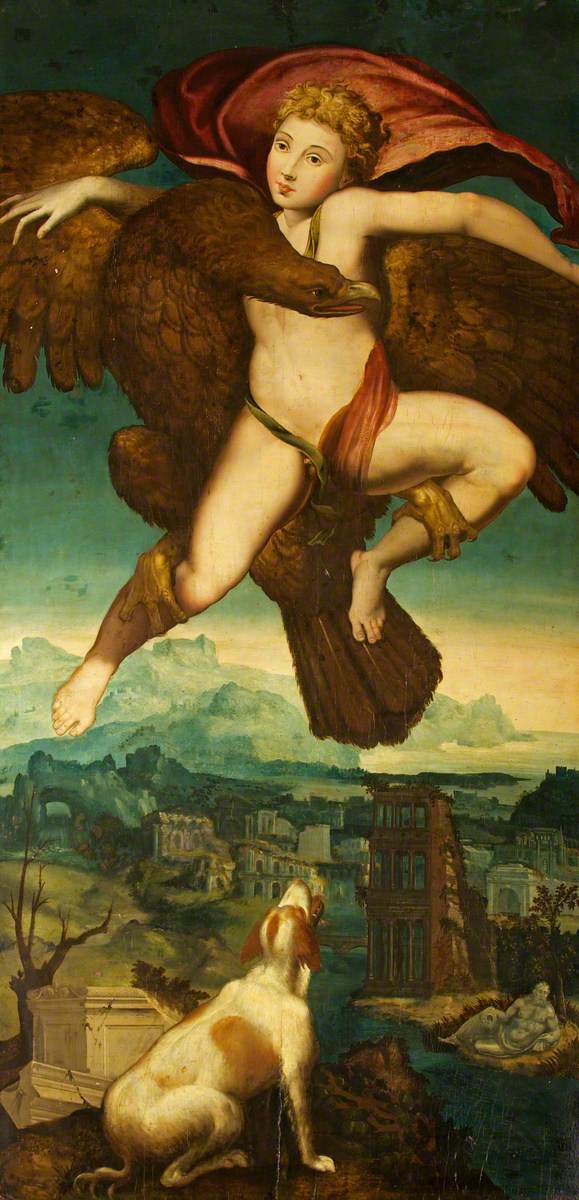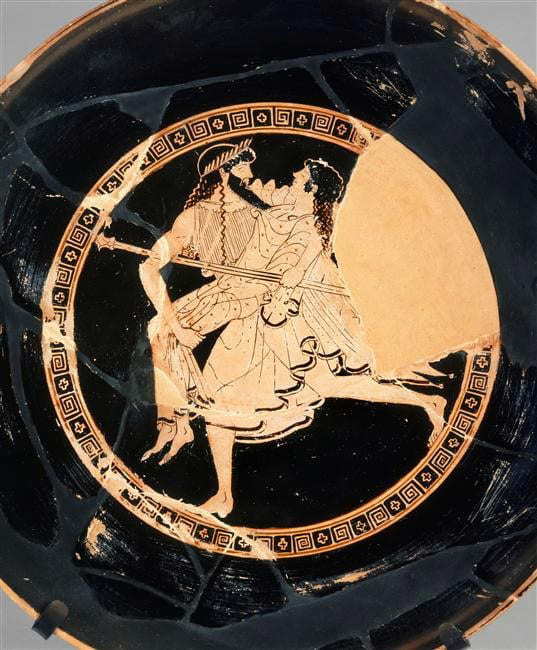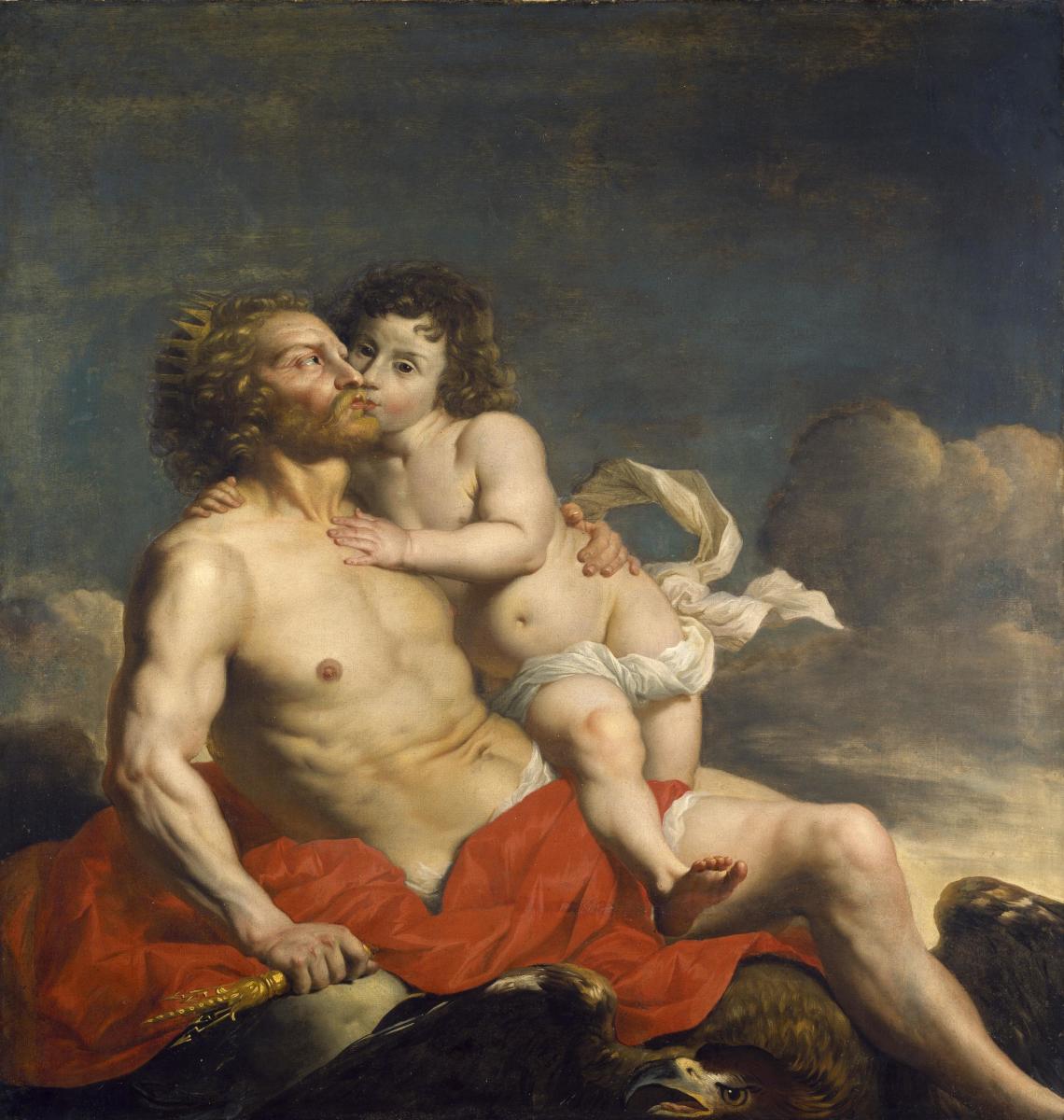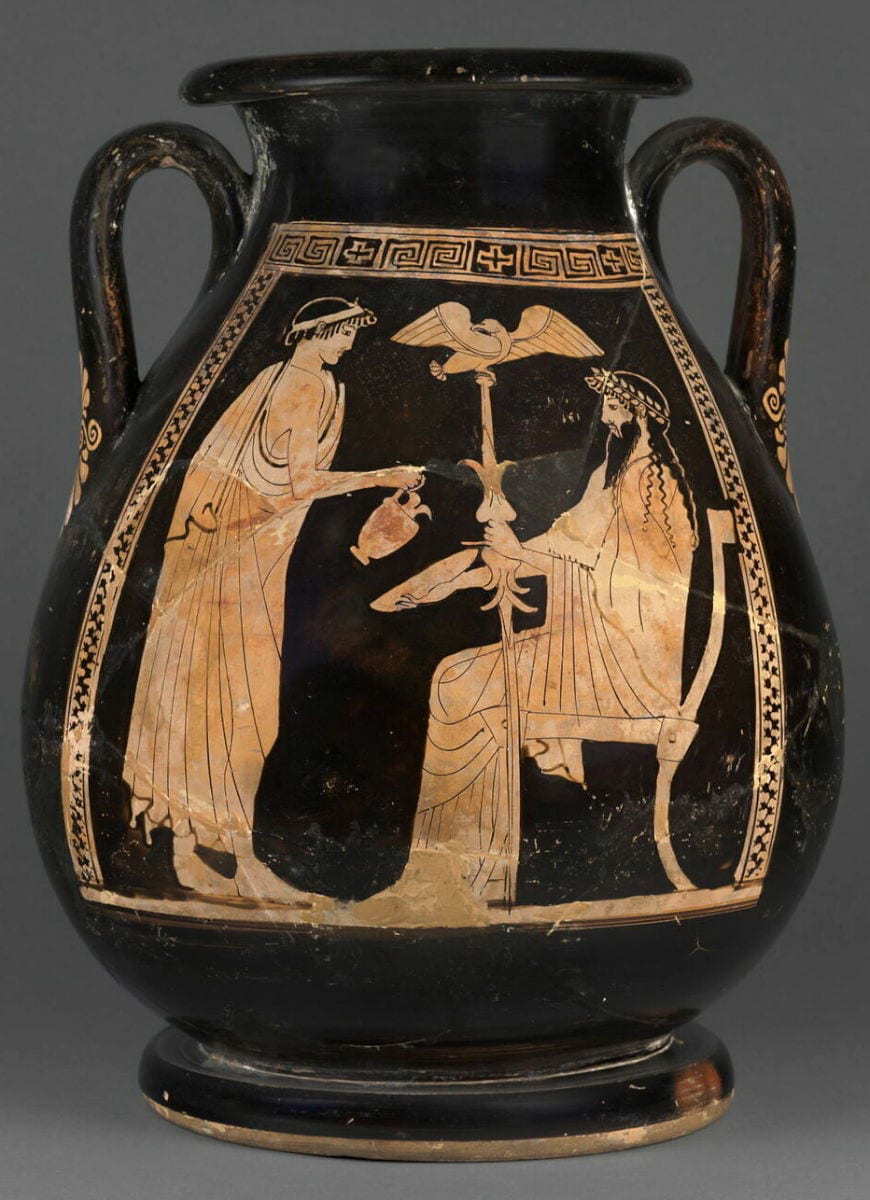Lets Rape Little Boys Drawing

"Zeus carried off golden-haired Ganymedes because of his beauty, to be amongst the Deathless Ones and pour drink for the gods in the house of Zeus–a wonder to see–, honoured by all the immortals as he draws the red nectar from the golden bowl."
Homeric Hymn 5 to Aphrodite
Ganymede (or Ganymedes) was a young man from Troy. His beauty was unparalleled and for that reason, Zeus abducted and brought him to Olympus to serve as his cupbearer and lover. Ganymede's myth is an important step in the history of homosexuality. But there is also a darker side to the story. Although none of the sources mention Ganymede's age, it is assumed that he was quite young, probably adolescent. Consequently, this myth can be related to ancient Greek pederasty.
Who Was Ganymede?

"godlike Ganymedes that was born the fairest of mortal men" Homer Iliad 20.199
Ganymede's myth was especially popular amongst the Greeks and the Romans. The first recorded mention of Ganymede is found in Homer's Iliad dating back to the 8th century BCE. Other notable sources include Hesiod, Pindar, Euripides, Apollodorus, Virgil, and Ovid.
According to Homer, Pindar, and Apollodorus, Ganymede was the son of Tros and Callirhoe. However, Euripides and Cicero, wrote that he was the son of Laomedon while there are other later mentions that he was the son of Ilus. This is not the only disagreement amongst the ancient sources. The ancient writers seem to have adopted varying traditions of Ganymede's myth which was a quite common phenomenon with Greek Mythology. It seems that the Greeks enjoyed retelling myths with slightly altered storylines, a practice that propelled the creative spirit that was expressed through ancient theatre.
Are you enjoying this article?
Sign up to our Free Weekly Newsletter
Please check your inbox to activate your subscription
Thank you!
Ganymede was an oxherd from the city of Troy and, although none of the sources mentions his age, we are consistently told that he was beautiful and young.
His beauty apparently was so great, so "godlike" (in Greek, antitheos) as Homer and Hesiod put it, that even the gods themselves could not resist him.
The Rape Of Ganymede

In particular, Zeus, the usual suspect of almost every Greek myth related to seduction and rape, decided that Ganymede was too perfect to walk the earth.
Zeus transformed himself into or sent an eagle and abducted the unsuspected Ganymede who was brought to Olympus. There, he was welcomed by Zeus who presented him with an unprecedented offer, to become his cupbearer; that is to pour the divine drink called nectar, into Zeus' and the other gods' cups.
The job did not come without benefits. Zeus also offered to make Ganymede an immortal, blessed with eternal youth, serving in the banquets of the gods forever.
The Gift Of Zeus

If we rethink Ganymede's myth up to this point, we will realize that he disappeared from earth abducted by an eagle, without warning or trace. His parents must have been terribly worried. According to the Homeric Hymn To Aphrodite:
"But grief that could not be soothed filled the heart of Tros; for he knew not whither the heaven-sent whirlwind had caught up his dear son, so that he mourned him always, unceasingly, until Zeus pitied him and gave him high-stepping horses such as carry the immortals as recompense for his son. These he gave him as a gift. And at the command of Zeus, the Guide, the slayer of Argus, told him all, and how his son would be deathless and unageing, even as the gods."
According to the Hymn, Zeus took care to let Ganymede's father know that his son was now walking among the gods blessed with the gift of immortality. Still, the god understood that he had to offer something to compensate for taking the son away from the family. Although the above excerpt, mentioned that Zeus gave Ganymede's father two horses of incomparable beauty, other sources mention a golden vine. Besides, the gift is in some versions presented by Zeus himself and in others by Hermes.
In any case, Zeus ensured that the father would be happy with the arrangement, even though it is unimaginable that anyone would happily trade their son for two horses or a golden vine. Yet, then again, this is a neglectable detail within the context of a story where an eagle abducts a boy to a neverland on top of a mountain where no one ever grows old.
Hera Is Jealous!
Although Zeus is well-known for his multiple affairs, Ganymede is a unique case. There are not many amongst Zeus' lovers who were chosen to live on Olympus amongst the immortals. In fact, according to Xenophon's Symposium, Ganymede was the only one of Zeus' lovers to be ever granted immortality!
Ganymede's ascension did not please everyone. Ovid writes that Ganymede came to Olympus "against Juno's (Hera's) will". But why?
Well, the previous cupbearer of the gods was Hebe, Hera's daughter. Now Ganymede was not simply replacing Hebe, but, as Nonnus – the Roman author of Dionnysaica – wrote, he was offending the goddess by pouring Nectar with human hands!
But there is more. Zeus did not only abduct Ganymede to serve as a simple cupbearer. The Greek sources are not really clear on this point. But they nonetheless imply that Ganymede was abducted by Zeus to serve as his cupbearer and lover. In later Roman sources, Ganymede is explicitly presented as Zeus' erotic partner. Hera's anger is also described in more detail:
"There Hera sat, looking furious even upon the shield, and showing in her mien how jealousy filled her soul; for she was pointing a finger at the boy, to show goddess Pallas who sat next her how a cowboy Ganymedes walked among the stars to pour out their wine, the sweet nectar of Olympos, and there he was handing the cups which were the lot of virgin Hebe." Nonus Dionysaica 25.439
Who Is The Constellation Of Aquarius?

"Many have said he (the constellation of Aquarius) is Ganymede, whom Jupiter [Zeus] is said to have made cupbearer of the gods, snatching him up from his parents because of his beauty. So he is shown as if pouring water from an urn." Pseudo-Hyginus, Astronomica 2. 29
The constellation of Aquarius could be Ganymede according to the above and many other testimonies.
Today, Ganymede is not only identified with the constellation of Aquarius. In post-Medieval times, his name was given to the largest moon of planet Jupiter by the Astronomer Simon Marius.
Ganymede's Myth And Homosexuality

The presocratic philosopher Xenophanes famously refuted Homer and Hesiod for anthropomorphizing the gods:
"Both Homer and Hesiod have attributed to the gods all things that are shameful and a reproach among mankind: theft, adultery, and mutual deception." DK-11
Xenophanes did not believe that this was a par excellence Greek invention, but that all people fashion gods based on their society:
"Aethiopians have gods with snub noses and black hair, Thracians have gods with grey eyes and red hair." DK-16
If Xenophanes was right, then Ganymede's myth is more than a simple story. It is yet another piece in the history of ancient sexuality, with particular importance for queer history. If the king of the gods was allowed to have a male lover, then this certainly suggests a lot for the people adhering to that religion. Also, if we ignore Ganymede's age, which, as we will explain below, remains debatable, Ganymede's myth indicates that erotic relations between individuals of the same sex were at the very least tolerated.
Pedophilia? Just How Old Was Ganymede

Even though we never learn Ganymede's age, the ancient sources explicitly imply that he was young, definitely an adolescent, or even younger. As such Ganymede's story has enormous importance in understanding not only homoeroticism but the dark part of the ancient Greek and later Roman societies called pedophilia. While exploring this history, though, we risk falling into a trap; that is assuming that all Greeks favored such a practice. That was simply not the case. Plato, in particular, stated that Ganymede's myth was a creation of the Cretans to justify their immoral ways, implying that, at least in Athens, not everyone partook in the idealization of this practice:
"And we all accuse the Cretans of concocting the story about Ganymede. Because it was the belief that they derived their laws from Zeus, they added on this story about Zeus in order that they might be following his example in enjoying this pleasure as well." Plato Laws 1.636c-d
Then again, Plato's claim indicates that Pederasty was indeed popular in at least one part of Greece, Crete. Also, the myth's popularity and reception, as well as the testimony of ancient art and ancient literature offer concrete evidence that many men engaged in homosexual activity from an early age as part of the institution of pederasty, the relationship between an adult teacher and young student.

It is important to note that today the age of consent is a legal indicator separating pederasty from valid sexual relationships. In antiquity, there was no such barrier, and the idea of consent was simply not there, as the history of rape in the ancient world indicates.
So, was Ganymede supposed to be an adult, an adolescent, or even an infant, as Rembrandt depicted him? Is Ganymede's myth another tale drawn from the mythological tradition of yet another ancient people or one of the most disturbing myths of antiquity? The big questions surrounding Ganymede's myth remain unanswered.
Ganymede In Art

In ancient art, Ganymede is commonly found as a cupbearer pouring Nectar to the cups of other gods. Very popular, especially in Hellenistic and Roman times, was the episode of his abduction (rape) by Zeus. The most famous example of this episode was the bronze sculpture of Ganymede being taken by the eagle-Zeus to heaven made by the Greek sculptor Leochares for the Mausoleum of Halicarnassus.

Another popular depiction, and the earliest one too, was that of Ganymede holding a cock. The cock was a common gift presented by an older man to a younger to indicate romantic interest. This custom took place in ancient Athens. This was also one of these places where the institution of pederasty was encouraged within the context of an ancient Greek patriarchal hierarchy.
Ganymede was always presented beardless (to denote his youth) and beautiful. In literature, he served as the stereotype of the young beautiful man and as such he survived into the Medieval period.
Ganymede was mentioned in Shakespeare's As you like it (1599). There, one female character takes on the name in order to disguise herself.
Furthermore, Johann Wolfgang von Goethe wrote a poem called Ganymed which lyrically presents Ganymede being seduced by Zeus. In 1817 Schubert inspired by Goethe's poem wrote the music for a strongly emotional song.
Many painters since the Renaissance painted scenes from Ganymede's myth. The most famous depictions are those by Michelangelo, Correggio, Rubens, Eustache Le Sueur, and Rembrandt.
Source: https://www.thecollector.com/ganymede-myth/
0 Response to "Lets Rape Little Boys Drawing"
Post a Comment